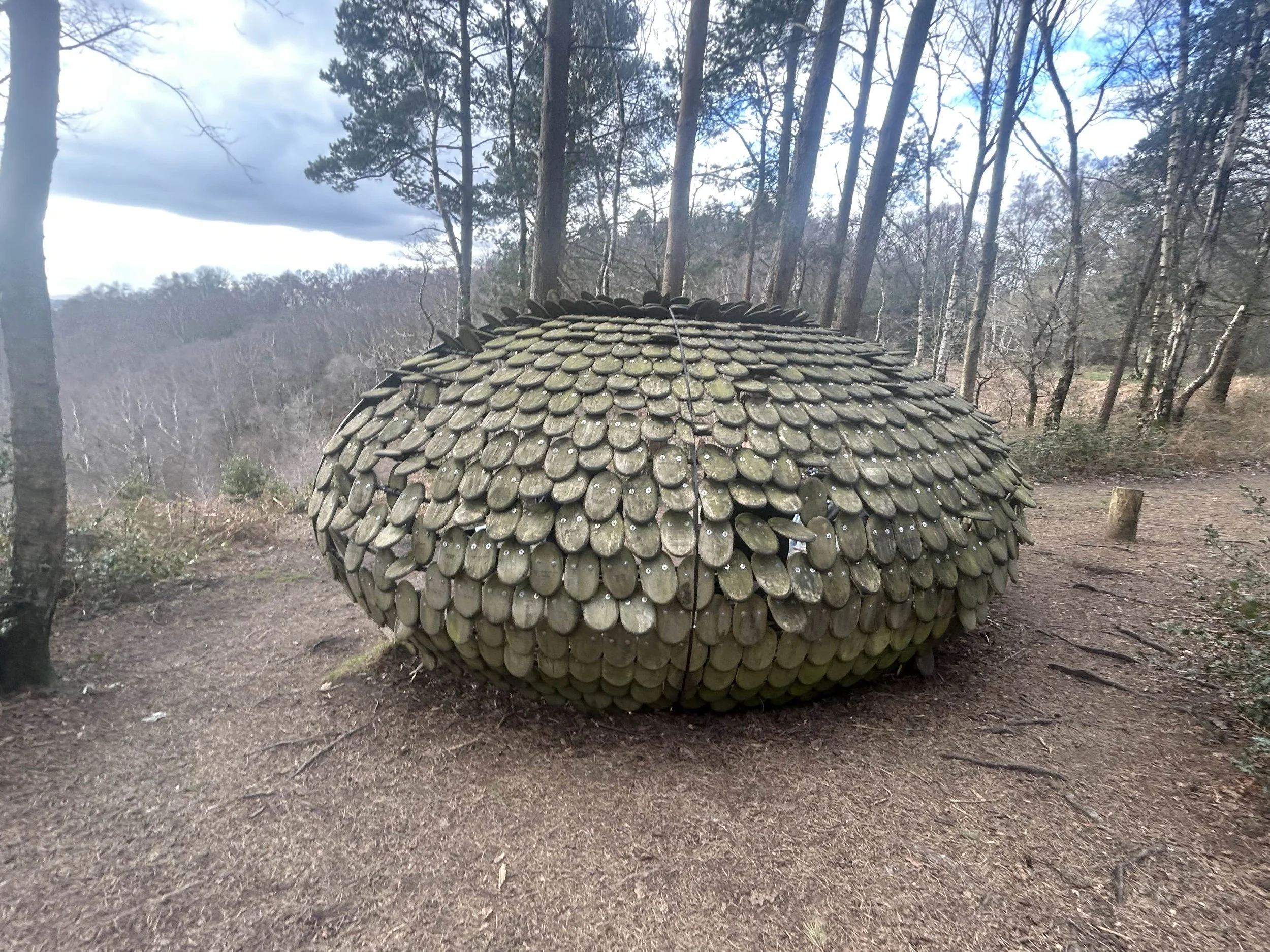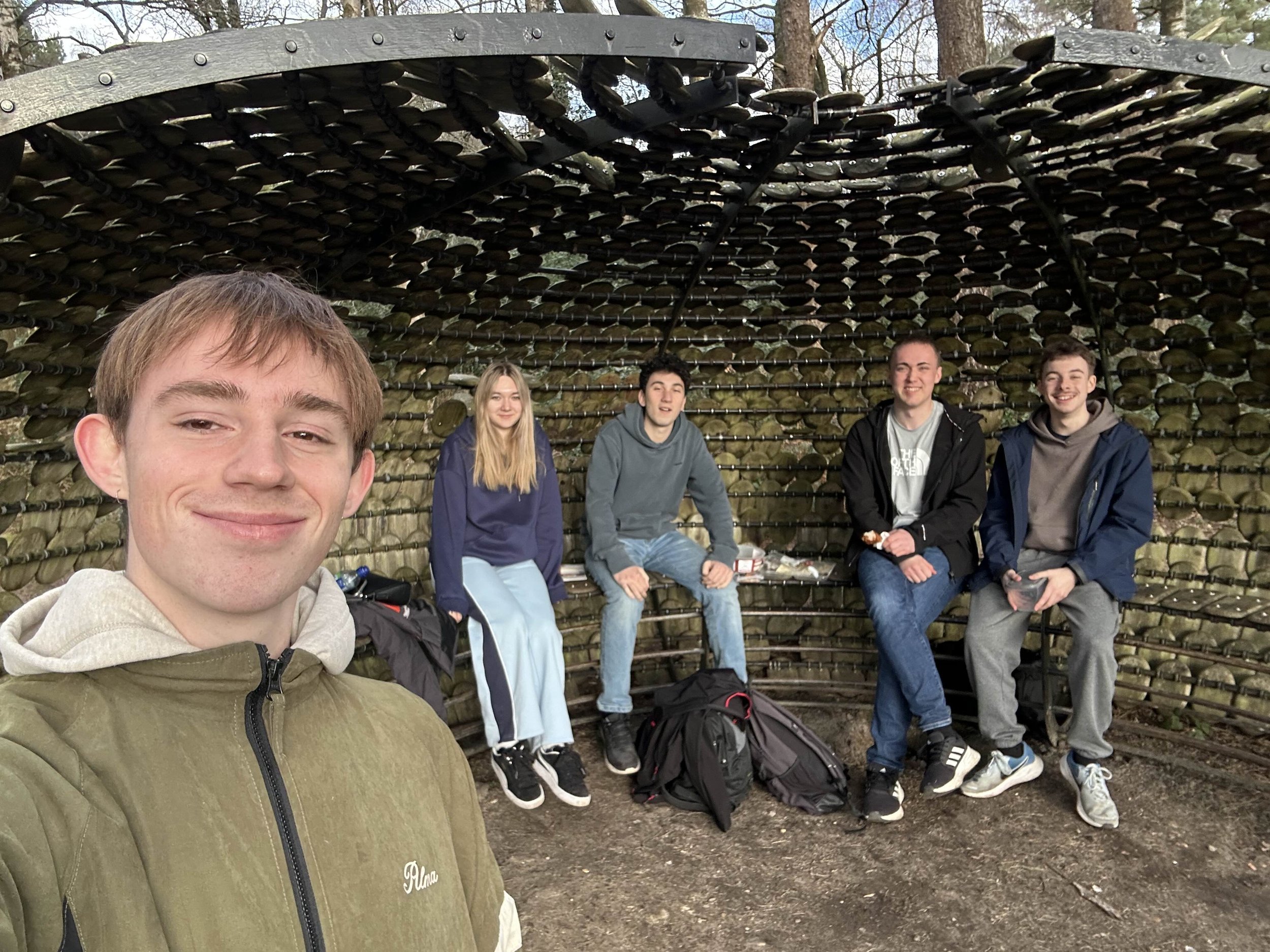When Nature Takes Lead: The Science and Art of Biomimicry
Biomimicry is a practice with a growing popularity. The term was first coined my Janine Benyus in 1997 and ever since, greater research has been prevailing. This blog considers how sustainable practices are changing the fundamental developments of architecture, evaluating how the use of biomimicry is adapting the way that we design, live and breath within the dwelling in which we ideate.
To research deeper into this notion, I conducted an ‘in person’ visit to the Giles Miller studio structure: Perspective.
Figure 1: Perspectives by Giles Miller, photographed by myself
DETAIL, magazine of architecture described perspectives as: “Inspired by the surroundings, it features a cedar wood skin that is reminiscent of a pine cone, not only in architectural terms.” The feature seems to be set permanently, giving it a ‘solid feeling’, this is amplified from what the Detail magazine states: “The steel skeleton of the belvedere consists of two parts weighing 230 kg and rests on a pre-cast concrete foundation.”
Figure 2: Cedar shingles from Perspectives photographed my myself
I think this perfectly embodies the words of Frank Lloyd Wright who said “No house should ever be on a hill or on anything. it should be of the hill. Belonging to it. Hill and house should live together each the happier for the other.”
Figure 3: Interior of Perspectives photographed by myself
Indeed, this structure embodies the shape of a pine cone. The structure seems to be one with the landscape, unobtrusive to its surrounding enviroment, though it was only constructed in 2016, the 9 years it has stood have weathered it to a state which fits in with the surrounding cilmate, someone unaware could conceive that the structure is as old as the tress encompassing the pavilion.
Another great example of biomimicry can be exhibited in my time at Lancaster University, where I completed a course in ‘bio architecture and biomimicry.’ At this course, I learnt how to draw designs which incorporated the enviroment around me and learnt about the different types of nature and animal anatomy which have inspired physical design.
For instance, the 1989 Japanese speed bullet train had a problem, it was fast, practically too fast, (170 mph fast) but whenever the train left a tunnel it pushed waves of atmospheric pressure through the other end. This created a sonic boom that could be heard 400 meters away, an unpopular consequence. As a result, an engineering team was introduced to design a quieter faster and more efficient model. As luck would have it, the general manager for technical development, was a bird watcher. Different components of the redesign bullet train were based on different birds.
Owls inspired the pantograph — the rig connecting the train to electric wires above was modelled after their feathers to reduce noise by using the same serration and curvature that allows the birds to silently catch pray.
The Adeline Penguin —whose smooth body allows it to slide inspired the pantographs supporting shaft redesigned to lower wind resistance.
The Kingfisher — whose unique shaped beak allows it to catch pray while barely making a splash, inspired an engineering team to shoot bullets shaped as different train nose models down a pipe to measure pressure waves. The quietest nose design was the one modelled after the kingfishers beak. When the redesign debuted in 1997, it was 10% faster, used 15% less electricity and stayed under the 70 decibels noise limit in residential areas.
This was achieved all with the wings of an owl, the belly of a penguin and the nose of a kinghfisher. Ultimately, these examples display how we can use nature to inspire our own architectural ideations and use the properties of organism to derive our own improvements into our design.
The term to describe this practice? Biomimicry.
I conclude with this statement from ‘99 percent invisible’ who state: “Life has been around on Earth for 3.8 billion years and designers are starting to realise that represents a lot of research and development time.”
Ultimately, evolution and adaptation are beginning to inspire our own designs, we are beginning to utilise millions of years of survival and natural selection to create what may be some of the best architecture in the coming years.
References
Benyus, J. M. (2002). Biomimicry : Innovation Inspired by Nature. Perennial. (Original work published 1997)
Golz, M. (2017, January 18). A pine-cone-like pavilion in the Surrey Hills. Detail.de. https://www.detail.de/de_en/a-pine-cone-like-pavilion-in-the-surrey-hills-29401
Kohlstedt, K. (2017, November 9). Biomimicry: How Designers Are Learning from the Natural World. 99% Invisible. https://99percentinvisible.org/article/biomimicry-designers-learning-natural-world/
Further reading:
https://youtu.be/GFjlR_Ep554?si=CSn4jGARU5co1hxS ref 3
Bridging Architecture and Biology: Biomimicry for Living Buildings ...



